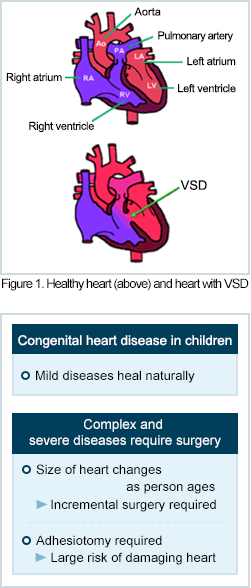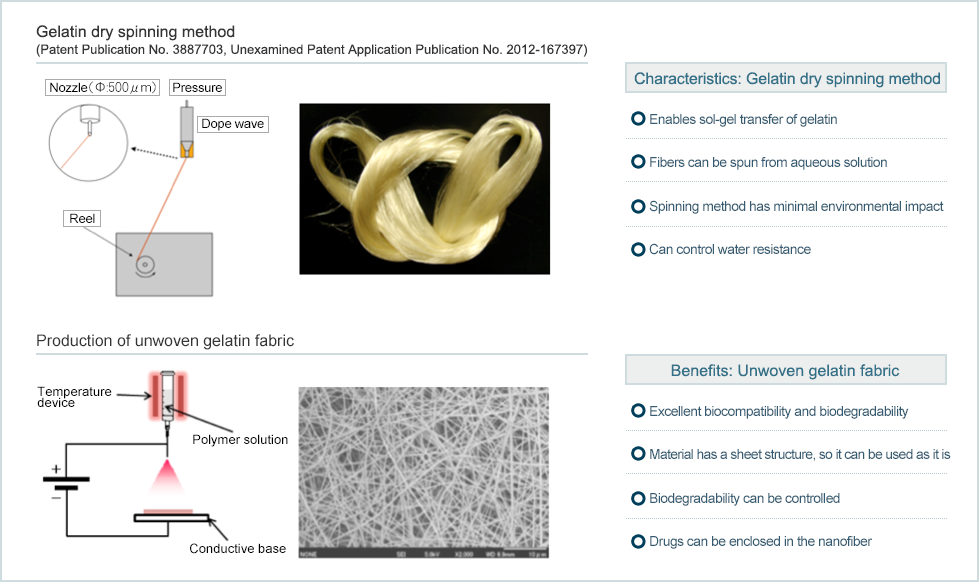
Heart conditions present at birth are as common as one in hundred live births. A heart disease present since birth is called congenital heart disease.
There are various kinds of congenital heart diseases; some may heal naturally, requiring no treatment, while others may require prompt and repeated surgery, and still others may be intractable.
A common congenital heart disease in Japan is ventricular septal defect (VSD) and pulmonary stenosis. When identified early and treated appropriately and at the right time, this condition can be completely cured in more than 90% of cases (Figure 1).
During childhood, the heart is still undergoing development. As the person matures, the heart changes in size. Therefore, if the person has a complex and severe heart condition, it is essential to predict the future shape and structure of the heart and conduct surgery accordingly. Long-term support and care is also vital.
Thus, children with congenital heart disease require surgical intervention in regular increments. Additionally, during these iterations of surgery, it is sometimes necessary to perform adhesiotomy, which entails the risk of damaging the heart.
However, there are no existing products to mitigate adhesions.
We are therefore developing a gel based anti-adhesion material that has outstanding biocompatibility and biodegradability.
Unwoven gelatin fabric, consisting of dry-spun fibers have been used, with the objectives of mechanical strength, biodegradability, and ability to adhere to the heart.

